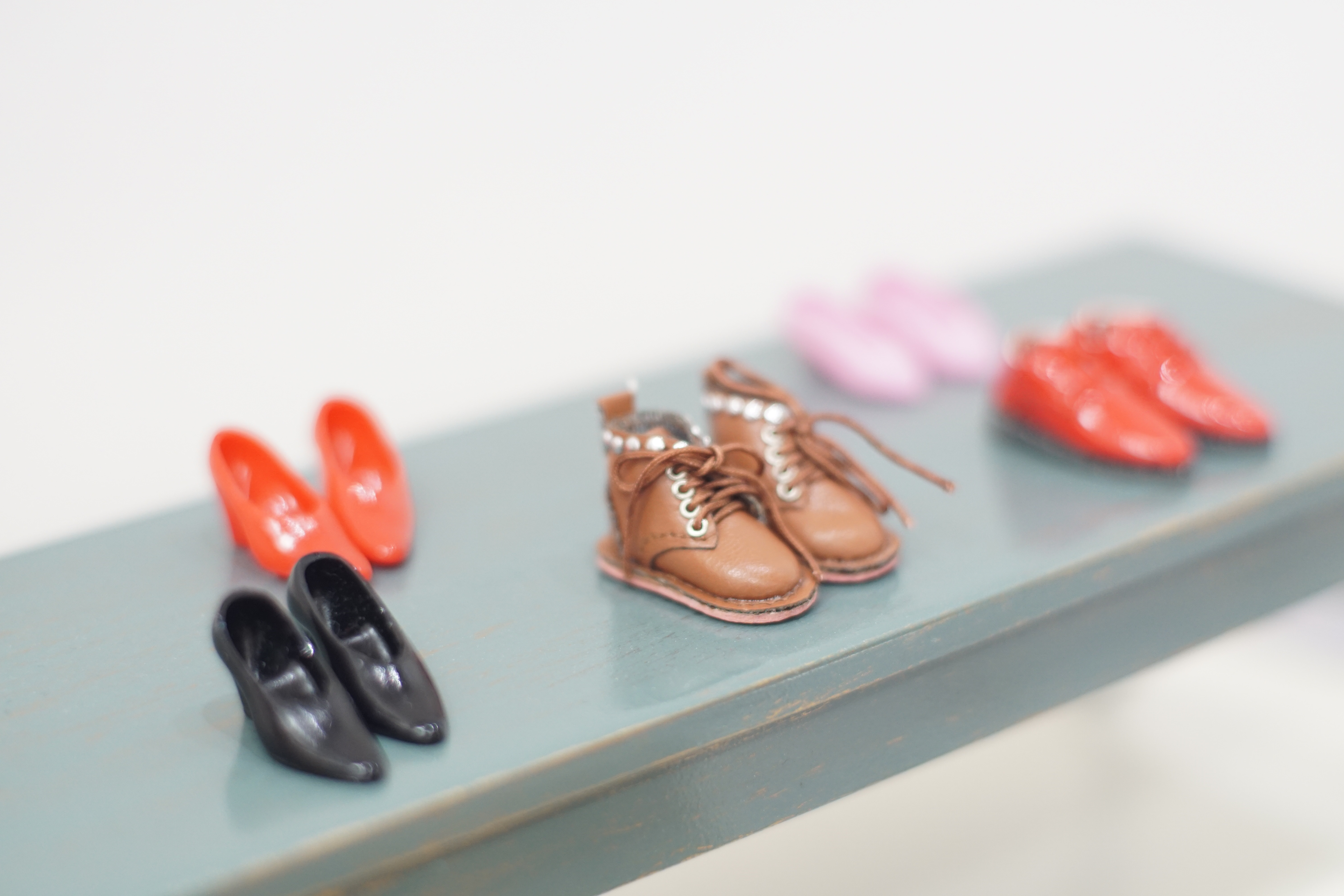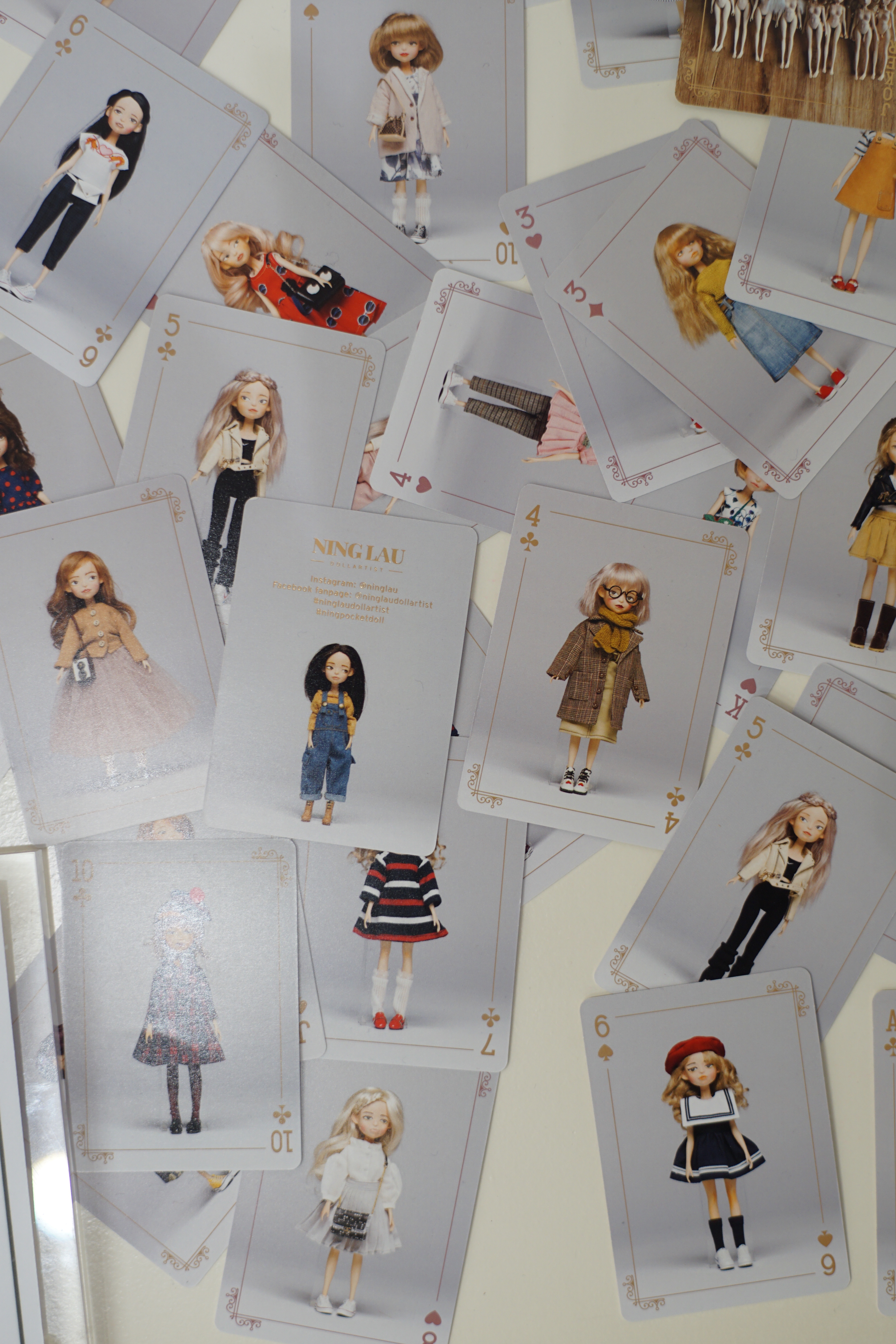賽馬會「童理撐」性暴力受害人社區教育計劃
Jockey Club "Back U up" Community Education Project for Child Survivors of Sexual Violence
Jockey Club "Back U up" Community Education Project for Child Survivors of Sexual Violence
網上展覽 Online Exhibition




— 策展人語 Curatorial Statement —
許多玩具被設計成明顯的性別化產品。雖然兒童玩具主要面向孩子,但實際的購買者和設計者卻是成年人。成年人在性別認知上已經形成了穩固的刻板印象,因此,面向兒童的玩具設計不可避免地反映了成人世界及主流社會價值觀中的性別角色。
在市場上,某些顏色(如粉紅色)和類型(如洋娃娃)被視為女性化,而其他顏色(如藍色)和類型(如火車)則被視為男性化。傳統的二元性別觀念將性別極端化,形成對立關係。我們通常將勇敢、挑許多玩具被設計成明顯的性別化產品。雖然兒童玩具主要面向孩子,但實際的購買者和設計者卻是成年人。成年人在性別認知上已經形成了穩固的刻板印象,因此,面向兒童的玩具設計不可避免地反映了成人世界及主流社會價值觀中的性別角色。傳統的二元性別觀念將性別極端化,形成對立關係。一方的存在無形中用來解釋和合理化另一方,進一步強化了刻板印象。
作為策展團隊,我們希望通過Sandra Bem於1981年提出的性別基模理論,引導觀眾重新審視日常生活中的性別敘事。從小孩子便開始學習將世界中的事物、特質和行為分類為“男性的”或“女性的”,並將這些分類內化到自身,形成自我概念的一部分。這種內化過程不僅影響他們對自身性別角色的認知,也塑造了他們對他人性別角色的期待。
我們相信,只有打破過度強調玩具性別化的限制,才能更好地支持孩子在健康、平等且多元包容的環境中成長。在習以為常的玩具挑選中,我們是否可以跳脫傳統框架?是否能夠重新定義孩子與玩具之間的關係?我們邀請您共同參與這場關於性別與文化重塑的討論,共同探索未來更平等、更自由的可能性。
Many toys are designed as distinctly gendered products. While children's toys are primarily targeted at kids, the actual purchasers and designers are adults. Adults have already formed solid stereotypes regarding gender, and therefore, the design of toys aimed at children inevitably reflects the gender roles prevalent in the adult world and mainstream societal values.
In the marketplace, certain colors (such as pink) and types of toys (like dolls) are viewed as feminine, while other colors (like blue) and types (such as trains) are seen as masculine. Traditional binary gender views polarize gender, creating opposing relationships. We often associate positive traits like bravery and challenge with masculinity, while negative traits such as weakness and passivity are linked to femininity. The existence of one side implicitly serves to explain and legitimize the other, further reinforcing stereotypes. For example, boys typically play with vehicles and weapons, while girls prefer dolls and kitchen sets. These toys not only reflect societal expectations of gender roles but may also limit children's opportunities to explore their interests and develop their abilities. This categorization affects children's choices and may pressure them to conform to societal expectations rather than pursue their own interests.
As a curatorial team, we aim to guide audiences in reexamining everyday gender narratives through Sandra Bem's Gender Schema Theory, introduced in 1981. Gender schemas are cognitive structures that help organize and understand gender-related information. From a young age, children learn to categorize objects, traits, and behaviors as "masculine" or "feminine," internalizing these classifications into their self-concept. This internalization process influences not only their understanding of their own gender roles but also shapes their expectations of others' roles.
We believe that breaking away from the overemphasis on gendered toys is essential for fostering a healthier, more equitable environment for children to grow. In our habitual toy selections, can we move beyond traditional frameworks? Can we redefine the relationship between children and their toys? We invite you to join this discussion on reshaping gender and cultural narratives as we explore the possibilities for a more equal and free future.
共同策展人 Co-curator
畢業於法國南特大學,主修話語分析碩士學位,同時修讀戲劇研究與實踐課程。現為獨立寫作者和藝術工作者,從事策展工作。著有《痛之花》,策展作品包括探討精神健康議題的《痛之花》,以及聚焦離島視角的《一人一個坪洲戲院的故事》等。她的創作融合了哲學思維和戲劇元素與藝術表達,利用跨文化的視角來探討個人與社會之間的複雜聯繫,深入研究包括心理景觀、性別動態和島嶼生活等多種主題。
Graduated from the University of Nantes in France with a master's degree in discourse analysis, while also studying theatre research and practice. Currently, she is an independent writer and art freelancer engaged in curatorial work. She has authored "Flower of Pain" and "My path to Pengchau Cinema." Her creations blend philosophical thinking and theatrical elements with artistic expression, utilising a cross-cultural perspective to examine the intricate connections between individuals and their communities, delving into a variety of topics including mental landscapes, gender dynamics, and island life.
項目主理人及設計師 Project Leader & Designer
共同協作單位 Collaborating Units
Ning Lau @ninglau
畢業於香港理工大學,於2007至2013年間擔任時裝零售巨擎 JOYCE的副總裁,主理市場傳訊及創作部。在加入時裝零售界之前,她是潮流雜誌《士多》出版人之一,並曾任時裝雜誌編輯。2011年出版雙語書藉《私收藏》,於香港及海外生活時尚店Colette(巴黎)及10 Corso Como (米蘭) 發售。
Graduated from BA (Hons) Fashion Design in Degree at The Hong Kong Polytechnic University, Ning Lau formerly worked as the Vice President of fashion retail JOYCE group from 2007 to 2013. Before she joined the retail industry, she was the founder and editor of “Store Magazine”. In 2011, Ning published her bilingual book, “My Treasures”, which was sold in Hong Kong, Paris Colette, and Milan Corso Como.
郭婷教授 Prof. Ting Guo
現任香港中文大學文化與宗教系助理教授、《美國宗教學會期刊》書評編輯。她曾任牛津大學達倫多夫自由研究項目,現亦為多倫多大學Wycliffe College的掛名助理教授。
她研究東亞及亞裔群體的宗教、政治與性別。她的研究立足於宗教情感轉向的前沿,帶入批判宗教、多重帝國和邊緣團結的視角。
她研究東亞及亞裔群體的宗教、政治與性別。她的研究立足於宗教情感轉向的前沿,帶入批判宗教、多重帝國和邊緣團結的視角。
Ting Guo is Assistant Professor of Religious Studies, Chinese University of Hong Kong and book review editor for the Journal of the American Academy of Religion. She was a research assistant for the Dahrendorf Programme for the Study of Freedom, University of Oxford and currently holds a status-only Assistant Professorship with Wycliffe College, University of Toronto.
陳燕怡 Cat
香港教育大學文學及文化學系哲學博士,研究興趣為作家的自我書寫、香港文學、繪本。文章見《中國現代文學》、《方圓》、《字花》、《明報》。曾任教大「我城我書」社區閱讀計劃統籌,以跨界合作的方式推廣文學作品及繪本閱讀。現為香港都會大學人文社會科學院兼任論文導師。在學術和工作以外喜歡偶戲和社區藝術。
Chen Yanyi Cat received her Ph.D. from the Department of Literature and Cultural Studies at The Education University of Hong Kong. Her research interests include writers' self-representation, Hong Kong Literature, and picture books. Her articles can be found in scholarly/literary journals and newspaper. She used to work as Project Coordinator for "One City One Book Hong Kong" a community reading programme initiated by EdUHK, promoting literary works and picture book reading through cross-disciplinary collaboration. Her recent work involves supervising MA theses at the School of Arts and Social Sciences at HKMU. In addition to her academic research, she enjoys puppetry and community arts.
翟桐 Rachel Chak
土生土長香港人,喜愛大自然與小社區。香港理工大學藝術及設計教育系一級榮譽畢業生,曾於時裝雜誌、廣告公司及本地藝術團體工作,探索藝術、設計與藝術教育之間的可能性。育有一女,嘗試從共學共養角度重新探索社區文化。創立「大地小孩」,以大自然、社區、傳統文化與藝術為基調,從發問、創作到學習,搞作有趣提案。
A native Hong Konger who loves nature and small communities. Graduated with first-class honors in Art and Design in Education from Hong Kong Polytechnic University. Experience includes working for fashion magazines, advertising companies, and local arts organizations, exploring the intersections of art, design, and art education. After becoming a mother, she is re-exploring community from a co-learning and co-nurturing perspective. As a founder of "The Good Soil," she is keen to focus on exploring fun and creative projects about nature, community, traditional culture, and art through curiosity and wonder.
作品介紹 Artwork Introduction
Jimmie Lu, Cat Chen
玩具世界 Toys World, 2025
動態影像 Video
4'39"
在兒童、玩具和廣告的關係中,兒童是消費者,玩具是商品,而廣告則是媒介。商家利用孩子能理解的視覺語言,引導他們進入玩具的角色扮演遊戲,基於性別刻板印象的顏色分類在兒童心中造成了二元性別的界限。
研究顯示,幼兒在選擇玩具時會根據外觀、顏色和性別意識來選擇屬於自己性別的玩具,拒絕異性的玩具。男性化玩具如賽車和變形金剛,而女性化玩具如芭比娃娃和廚房玩具。
經典玩具廣告展示了如何為玩具添加性別特徵。男性形象主導男性化玩具的廣告,而女性角色則常出現在洋娃娃和化妝品的廣告中。對於電視廣告,男童通常在戶外快速獨自玩耍,而女童則多在室內以夢幻甜美的氛圍結伴玩耍。
男性化玩具強調力量與攻擊性,而女性化玩具則注重外表與情感。
無論是芭比娃娃還是Hot Wheels,這些玩具背後都隱藏著深刻的性別意識形態。
In the relationship between children, toys, and advertising, children are the consumers, toys are the products, and advertising serves as the medium. Businesses use visual language that children can understand to engage them in role-playing games centered around toys. However, color classifications based on gender stereotypes create a binary gender divide in children's minds.
Research shows that young children choose toys based on appearance, color, and gender awareness, often selecting toys associated with their own gender while rejecting those linked to the opposite gender. Masculine toys include items like race cars and Transformers, while feminine toys encompass Barbie dolls and kitchen sets.
Classic toy advertisements illustrate how gender characteristics are added to toys. Male imagery dominates the advertising for masculine toys, while female characters frequently appear in ads for dolls and cosmetics. In television commer-cials, boys are typically depicted playing quickly and alone outdoors, often in combat or competition scenarios, whereas girls are more often shown playing together indoors in dreamy and sweet atmospheres. Masculine toys emphasize power and aggression, while feminine toys focus on appearance and emotions.
Whether it's Barbie dolls or Hot Wheels, these toys embody deep-seated gender ideologies.
Jimmie Lu
玩具童話屋 Toys Room, 2025
複合媒介 Mixed media
180cm x 130cm x 130cm
在玩具世界裡面,流傳着一個童話故事,故事裡面的女孩 是粉紅色的,男孩是藍色的,男孩勇敢挑戰,女孩被動等 著被救…這個世界有高低之分,軟硬之分,強弱之分。
從小女孩的敎育中,她被灌輸要在長大後成為一名母親, 承擔照顧孩子、縫補衣物和做飯洗衣的責任。因此,她的 玩具選擇應以小玩偶和烹飪遊戲為主,而不是像玩具車或 玩具槍這樣偏向「男孩子」的玩具。正如西蒙·德·波娃說:「女人不是天生的,而是後天形成的。」女性的形象是透過社會制度和價値觀後天形成的。當社會要求女性「看起來像個 女人」時,這實際上反映了她們所面臨的性別規範和限制。
阿爾弗雷德·阿德勒認為,高與低的概念有著極重要的意義,在空間上升的想法,暗示著一種精神上的優越性,這點可以在各種英雄神話中看到;登峰造極,就是明顯超越了事實的普通世界,成為主權的主體(自我);攀登在男孩子 當中往往是挑戰的主要方式。而小女孩,則被禁止參加這 類英勇行動,只能坐在樹下或山下眼巴巴地看著勝利的男 孩子高高在上。此時她必然覺得,自己無論在肉體上還是 在精神上,都是低於他們的。如果她在賽跑或跳高比賽中 落後,如果在打架時被人摔倒或只當一個旁觀者,她也會 產生這種感覺。 空間的暗示,也表現在學校中的使用空間,返學休息時間,女孩子們坐上長凳談笑,男孩子們沖向籃球場、足球場這些更加廣闊的空間,他們奔跑,競爭,為將來的廣闊世界探索做準備。 性別認知是學習而非天生的過程,習得的和自然的早已模 糊不淸,但如果可以選擇,你會希望在童話屋內如何描寫 你的童話故事?
In the world of toys, there is a fairy tale where the girl is pink and the boy is blue. The boy bravely challenges, while the girl passively waits to be saved... In this world, there are distinctions of height, softness and hardness, strength and weakness.
From a young age, girls are taught to aspire to become mothers, taking on responsibilities such as caring for children, sewing clothes, and cooking. Therefore, their toy choices are primarily small dolls and cooking games, rather than "boyish" toys like toy cars or toy guns. As Simone de Beauvoir said, "One is not born a woman; rather, one becomes a woman." The image of femininity is formed through social systems and values. When society demands that women "look like women," it reects the gender norms and limitations they face.
Alfred Adler believed that the concepts of high and low carry signicant meaning. The idea of rising in space implies a form of spiritual superiority, which can be seen in various heroic myths; reaching the peak clearly transcends the ordinary world to become a sovereign subject (the self). Climbing is often the primary means of challenge among boys. In contrast, girls are prohibited from participating in such heroic actions and can only sit under trees or at the foot of mountains, watching the victorious boys from above. At this moment, they inevitably feel inferior to them both physically and mentally. If they fall behind in races or high jumps, or if they are knocked down in fights or merely act as bystanders, they will also experience this feeling.
The implications of space are also reflected in school environ-ments. During recess, girls sit on benches chatting while boys rush towards basketball courts and soccer fields—broader spaces where they run and compete, preparing for a larger world ahead. Gender cognition is a learned process rather than an innate one; the lines between learned behaviors and natural instincts have long been blurred. But if given a choice, how would you wish to depict your fairy tale story within the toy room?
Jimmie Lu
玩具抓周 Toys Zhuazhou, 2025
複合媒介 Mixed media
80cm x 80cm x 80cm
抓周是一種古老的傳統習俗,最早見於南北朝時期,特別 是在江南地區。根據《顏氏家訓》的記載,當孩子滿一歲時 ,家長會為他們準備新衣、洗澡和裝飾,並在孩子面前擺 放各種物品,如弓箭、紙筆、刀尺等,讓孩子隨意抓取, 以此預測他們未來的發展方向。這一儀式表面上看似尊重 孩子的選擇,但實際上卻反映了深刻的性別分歧。
在抓周過程中,父母對於孩子可以抓取的物品擁有決定權 。雖然某些傳統物品是固定的,但最終的選擇仍然取決於 父母的意願。男孩通常被引導去抓取與力量和競爭相關的物品,而女孩則可能選擇與美麗和家庭相關的物品。
此外,所選擇的物品也存在解釋權。由於可選擇的物品有限,父母往往根據孩子所抓取的物品來解釋其未來發展。例如,如果男孩抓起了胭脂粉,父母可能會認為他將來會沉迷女性,而忽略他可能成為化妝師。如果是女孩抓取同樣的物品,則可能被視作她將來會成為美人。
隨著時代變遷,「抓周玩具」成為一種現代商業化變種,如 今更多的是家庭聚會和祝福的儀式。在這個過程中,父母 在選購玩具時無意中將自己的性別想像投射到孩子身上。 因此,問題變成了究竟是小朋友在抓周,還是父母在抓周呢?
Zhua Zhou is an ancient traditional custom that first appeared during the Southern and Northern Dynasties, particularly in the Jiangnan region. According to the "Family Instructions for the Yan Clan," when a child turns one year old, parents prepare new clothes, bathe, and decorate the child. They then place various items, such as bows, arrows, paper, pens, knives, and rulers in front of the child, allowing them to grab whatever they like. This act is meant to predict the child's future development. While this ritual seems to respect the child's choices, it actually reflects deep gender divides.
During the Zhua Zhou process, parents have the authority to decide which items are available for their children to grab. Although some traditional items are fixed, the final selection is still determined by parental preferences.
Moreover, there is interpretative power regarding the chosen items. Due to the limited selection of items, parents often explain their child's future based on what they grab. For instance, if a boy picks up a lipstick, parents might assume he will be obsessed with femininity, overlooking the possibility that he could become a makeup artist. Conversely, if a girl grabs the same item, it may be seen as her destined path to becoming a beauty.
With changing times, "Zhua Zhou toys" have emerged as a modern commercial variant of this tradition. In this process, parents inadvertently project their gender expectations onto their children when selecting toys. Thus, the question arises: is it the child participating in Zhua Zhou or are the parents?
非主流芭比 Non-Mainstream Barbie






娃娃藝術家Ning Lau在其手繪娃娃 系列中,表現了她對芭比娃娃的不同演繹,她的手镥娃娃在體型上更貼近現實及亞洲人身型,把圓潤的四肢、雙下巴這些特徵運用在她的娃娃設計上,除了呼應真實世界的文性體態外,也把這些大眾眼中的「不完美」的特質融入「可愛」的娃娃中。
她想透過娃娃來表達Self-Acceptance的概念,這些娃娃都是根據個人的特質而特別訂造,每個都是人手繪畫獨一無二,而髮型、妝容及衣着打扮也根據真人而製作,不再是模式化的泡泡公主桾,可以選擇中性打扮或是全黑的時尚造型;客人更可以選擇不同身型和特徵例如「有肚腩」、「粗腿」、圓臉」或「雙下巴」,甚至在流眼淚的娃娃、滿面雀斑的娃娃…。Ning創作的娃娃一般也沒有裂咀大笑,正如真人也不是經常都能保持心情愉快笑臉
迎人。
每一個人和手繪娃娃一樣也是獨一無二,Ning的娃娃把「美的定義」個人化,她認為美不美只是主觀而虛無的量度單位,以單一的「美的標準」去比較獨特存在的個體意義不大;接受、欣賞及擁抱自己的獨特性甚至不完美、Ning希望透過她的娃娃幫助别人建立Self-Love這重要的自我肯定價值觀。
Doll artist Ning Lau expresses her different perspectives on the objectification and stereotyping of women by Barbie dolls in her hand-painted doll series. She incorporated characteristics such as rounded limbs and double chins into her designs. This not only reflects the real-world female form but also integrates what are often perceived as "imperfections" into these "cute" dolls.
The concept of Self-Acceptance is emphasized, each doll is specially crafted based on individual traits, with every piece being uniquely hand-painted. The hairstyles, makeup, and outfits are tailored to real people, moving away from the standardized princess dresses. They can also select different body types and features, such as "tummy," "thick thighs,"
"round face," or "double chin," and even request dolls with tears or freckles. Ning's dolls generally do not wear wide smiles, reflecting the reality that people do not always maintain a cheerful demeanor. Just like every person, Ning's hand-painted dolls are unique. She personalizes the definition of beauty, believing that beauty is a subjective and intangible measure. By accepting and embracing one's uniqueness- even imperfections Ning hopes to help others for Self-Love stimulation, leading to the important value of self-affirmation.
你決定她長什麼樣.......
娃娃藝術家Ning Lau特別為這『性別Toy教』展覽創作了不同表情的娃娃,她們跟真人一樣:有瘦有肥、有雙下巴有尖面、有開心和變愁的時候:造型方面有裙子也有褲子、有皮鞋球鞋高跟鞋、娃娃也可以隨自己心情改變髮型及髮色... 你來幫她決定吧。
You Decide How She Looks Like…
Doll artist Ning Lau has specially created dolls with different expressions for hte "Education fo Toys" exhibition. These dolls are just like real people: some are slim, some are plump; some have double chins, while others have sharp faces ; they can be happy or sad. For their style ,there are choices of dresses as wel as pants, and options or leather shoes, sneakers, and high heels. The dolls can also change their hairstyles nad hair colors according ot their moods. s'tI al pu toyou todecide!
如有查詢,歡迎致電 2625 4016 或電郵至 info@anti480.org.hk

